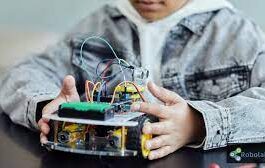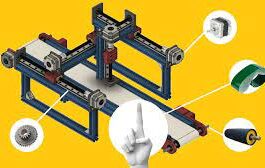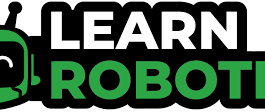Robotic Drives & Physics
- Robotic Drives & Physics How do we make a robot move.
- What kind of ways are there to power our robots
- And how can we use even tiny motors to move a substantial load?
$11.99
Buy nowDescription
What you’ll learn
- Robotic Drives & Physics How do we make a robot move.
- What kind of ways are there to power our robots
- And how can we use even tiny motors to move a substantial load?
- How can we make things like robotic, bionic arms?
Requirements:
- Fulfillment of courses 1 & 2 in the series,
- Or a good knowledge of electricity, analog and digital electronics.
Description:
- In this course we’ll be covering:
- Simple machines (which all come into play in surprising ways you probably haven’t seen before)
- Designing an arm robot
- The toggle mechanism (again, comes into play in a ridiculous number of surprising ways you probably haven’t seen before)
- harmonic drives, cycloidal drives, epicyclic drives, traction drives
- strength of Robotic Drives & Physics & construction challenge
- case study: design challenges of a deep-submarine, remotely operated vehicle
- hydraulics & pneumatics (including building your own)
- air & hydraulic muscles, muscle wire
- servos (speed, pressure, force, position, etc…)
- DC motors, BLDC motors, BLDC servo motors, stepper motors, AC motors, AC servo motors, single and three phase power, electrical generation
- frequency drives, PWM AC signal generation
- regenerative / rheostatic / dynamic braking, looking at electric vehicle design and locomotive design
- counter-force systems you will encounter in industrial robots
- safety around robot systems, in industry and hobby
- robot designs: articulated arm, gantry, spine, collaborative
- case study: combat robots
- With over 45,000 students enrolled in the first two courses in the “Robotics: Learn by building” series, more than 3,200 five star ratings in the first course alone, students aged 8 to 60+ have enjoyed the course series and its projects.
- No prior knowledge of mechanics, physics or Robotic Drives & Physics is needed.
- You will need a good understanding of electricity & electronics and digital control and some basic math.
- If you have completed course 1 “Electricity and Electronics” and course 2 “Digital Electronics” you have the background you need as we will be using those skills in this course to drive different kinds of electric motors.
You must be logged in to post a review.








Reviews
There are no reviews yet.